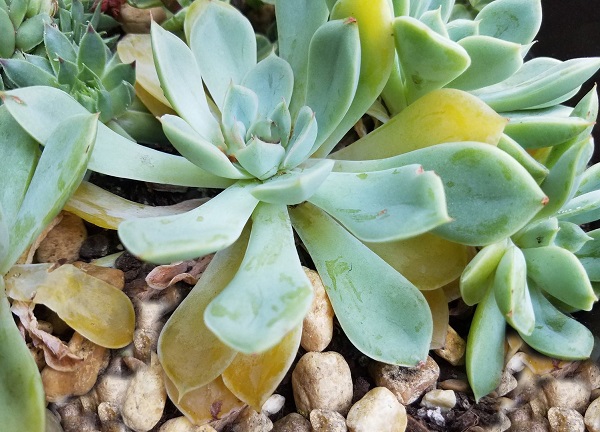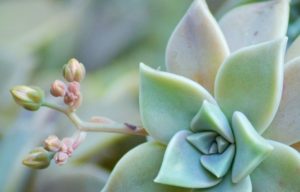You take care of your succulents. You do your best to give them great care and to water them properly. But now, you’ve got a plant with succulent leaves falling off. The leaves look a bit translucent and feel kind of squishy. You do your research and learn these are signs of overwatered succulents. With further investigation, you conclude that overwatering led to some succulent rot. Don’t feel bad — it happens. But while it’s good to know what the problem is, you need to know what to do next. Read on to learn how to save your overwatered succulents.
Succulent Leaves Falling Off & What to Do
In this Post We'll Cover:
{Please note, some links in this post may be affiliate links to sites that pay me a small commission if you click on the link and make a purchase. This commission is at absolutely no cost to you. I only recommend products and companies that I have worked with and truly love! ~Kat}
Checking Succulent Roots
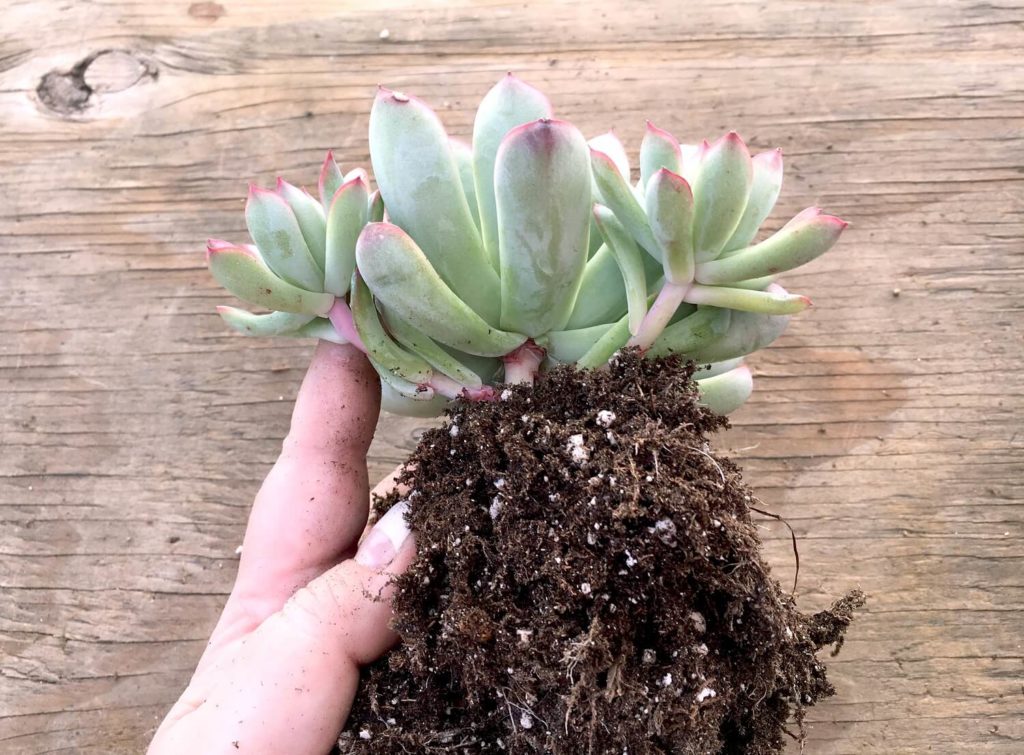
You over-watered your succulent. It happens. Maybe it was left out in the rain. Sometimes roots grow compacted and block the drainage hole. Now we need to correct it.
Never be afraid to take your succulent out of the soil to better check its condition. The roots of any plant are essential to its health, and succulents are far more tolerant of being dug up than most plants. If you overwatered, but there are no succulent leaves falling off, and you see no signs at all of succulent rot, just taking it out of its container may solve the issue. Leave the root ball and soil intact, and squeeze out excess water. You can then set the plant and root ball beside the container and leave it for a day or two so the soil dries out quite rapidly. This is to prevent any rot from developing.
Signs of Overwatered Succulents
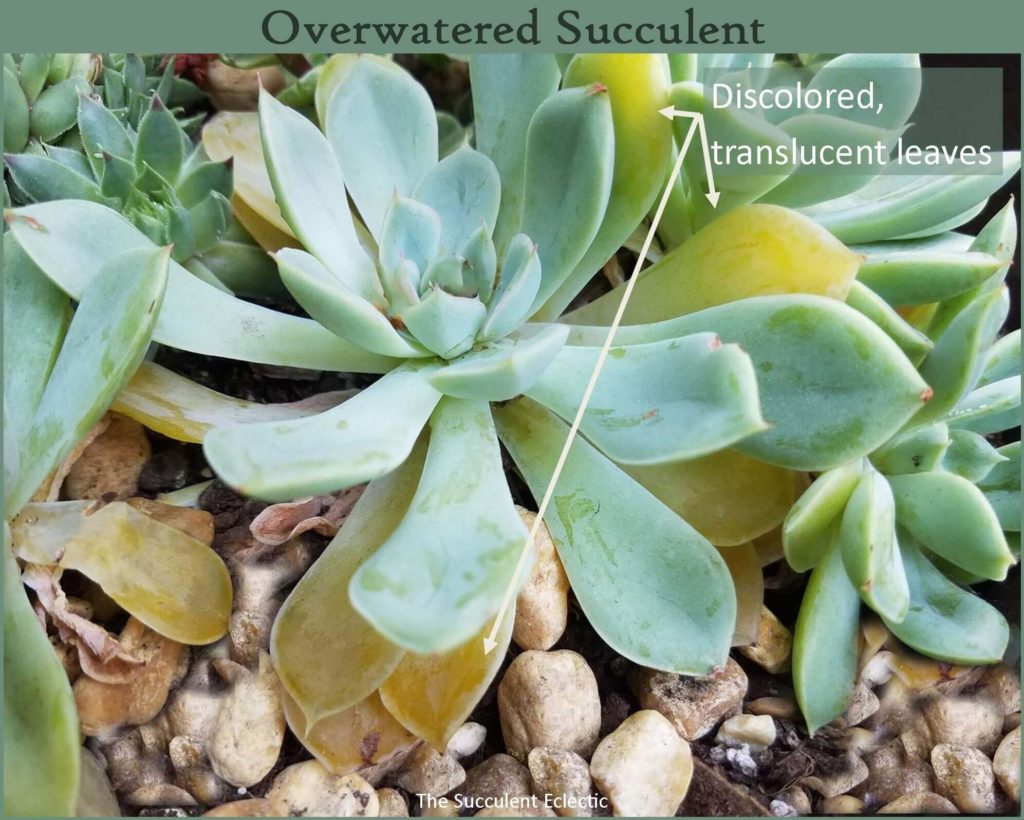
Your first sign of overwatered succulents is likely to be when the leaves change color and begin to look a bit translucent. This is due to the excess water bursting the walls of the water-storage cells. No longer neatly stored within specialized cells, the water runs through the leaf, diluting its color and making the leaf feel squishy as it begins to rot. Soon, these are succulent leaves falling off the plant.
Overwatering leads to succulent rot and is the quickest way to kill succulent plants. The sooner you recognize an overwatered succulent, the sooner you can take action to save it.
Treating Overwatered Succulents
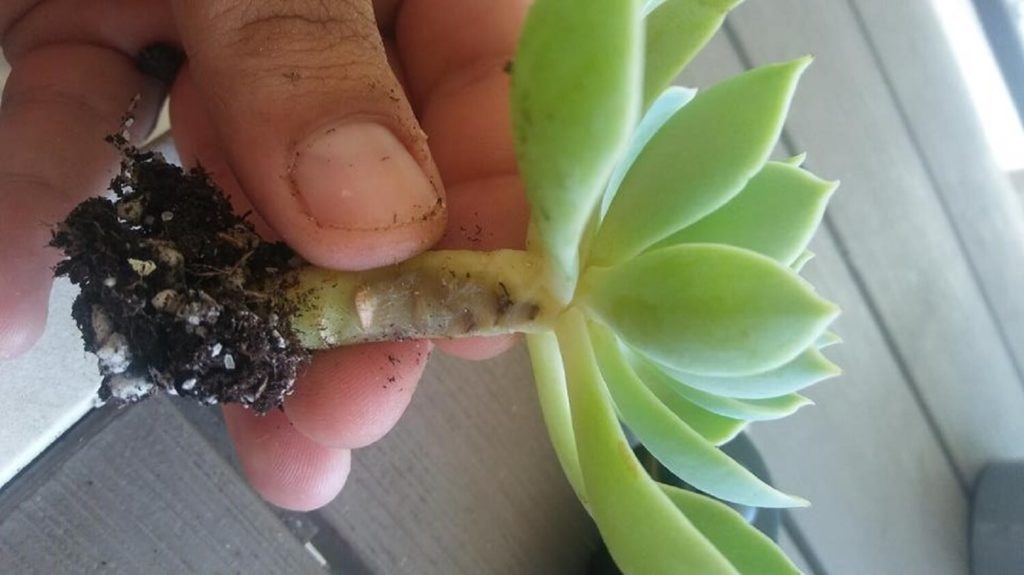
The first sign of trouble Terran saw with her Echeveria was a few floppy leaves. They fell off at the slightest touch. She dug up her plant, and in addition to succulent leaves falling off, the stem had a discoloration that was squishy where it was brown. It looks like a bruise on a piece of fruit. She recognized that she had succulent stem rot.
The small amount of root structure compared to the size of the top growth demonstrates a problem. Either this was a newly rooted succulent cutting, or much of the roots had rotted away as well. Go ahead and dig up your succulent to get a better look at the root structure. Succulents are far more tolerant of this than other plants, and it’s a good way to be certain of what is happening. If you discover or suspect root rot, remove excess soil, rinsing the roots if the soil is muddy. If you discover rot, discard the used soil and thoroughly wash out the container.
Dealing with Succulent Stem Rot
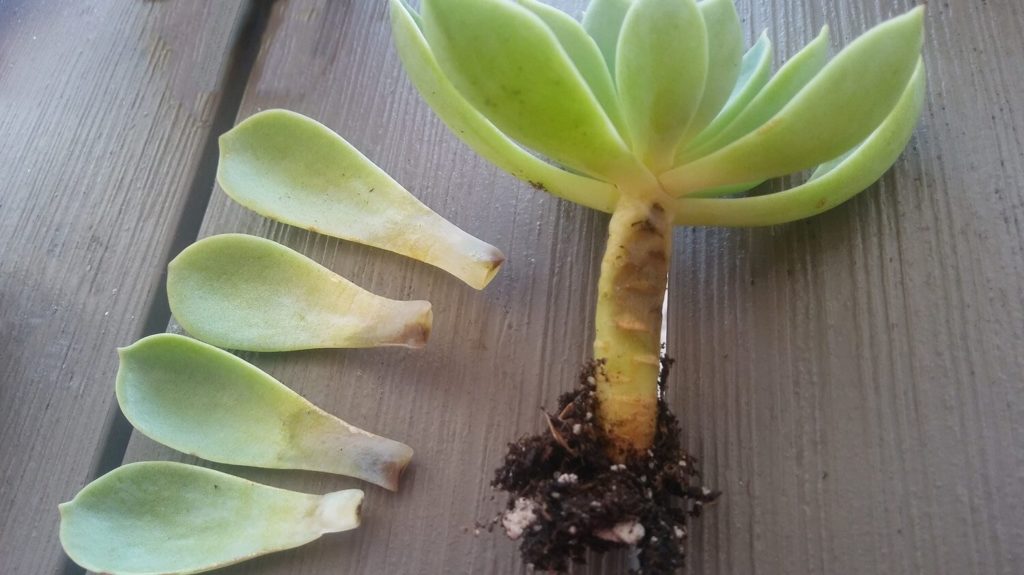
Terran found succulent stem rot. Her overwatered succulent was rotting at the soil line. See the discolored base of the leaves on the left? Like the stem, they show signs of rot. This was the cause of the succulent leaves falling off. Because they rotted at the point where meristemMeristem (MEHR-i-stem) tissue in plants contains undifferent... tissue develops, they are no longer viable for propagation. The meristem tissue is the part of the leaf that can sprout new roots and leaves. When this is rotted, there can be no further growth or development.
However, upon close inspection, the rest of the leaves above the succulent stem rot still appear healthy.
Saving a Plant with Succulent Stem Rot
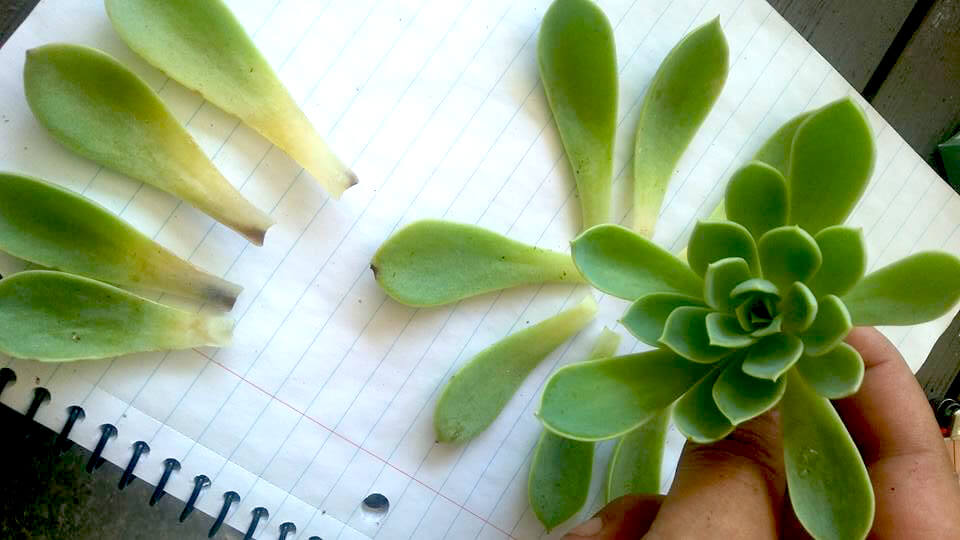
When dealing with an overwatered succulent that has developed succulent rot, whether of leaves, stem, or roots, it’s important to separate the rotting tissue from
First, remove all signs of rot. Remove the leaves, and cut off the stem that has any rot. Then, look inside the stem you have remaining to check for any signs of rot in the core of the stem. Continue cutting it back until all signs of rot are removed. In doing this, Terran removed healthy leaves from the stem. These healthy leaves were able to be propagated from their meristem tissue. She still had a rice rosette from the very top of her Echeveria with about 1/2 inch of stem after
With multiple leaves forming baby plants and the top of the rosette rooting well in fresh soil, Terran was able to save her overwatered succulent.
Succulent Rot in Black Echeveria
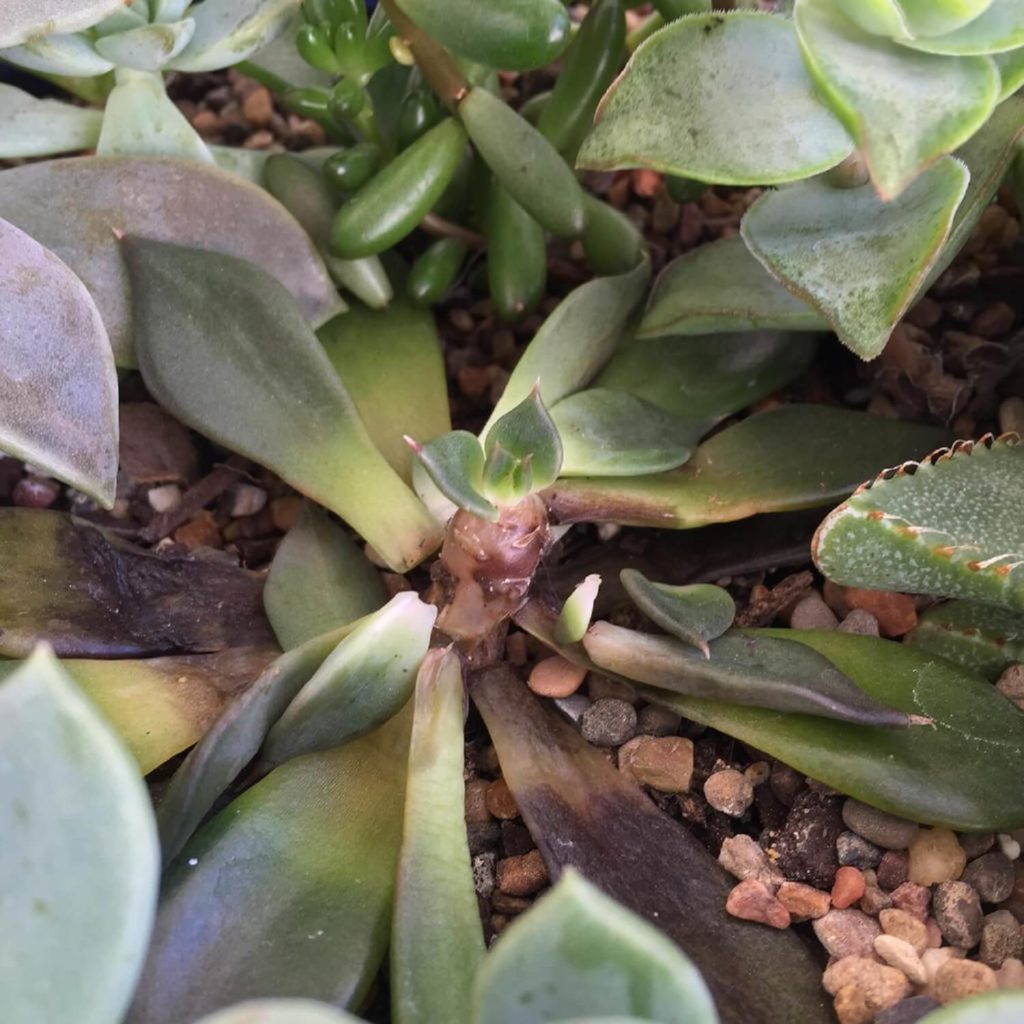
For some reason, black Echeveria, like this Black Prince, are especially sensitive to rot. If you love growing these varieties as I do, you’re certain to see a plant with all its succulent leaves falling off at one time or another. These plants quickly respond to overwatering by suddenly dropping all of their leaves. As frustrating as their sensitivity is, it usually means most of the fallen leaves will be in healthy condition to root and develop into plants of their own. This is a survival mechanism for the plant to continue to propagate, even when the parent plant is more susceptible to death.
Steps to Saving Overwatered Succulents
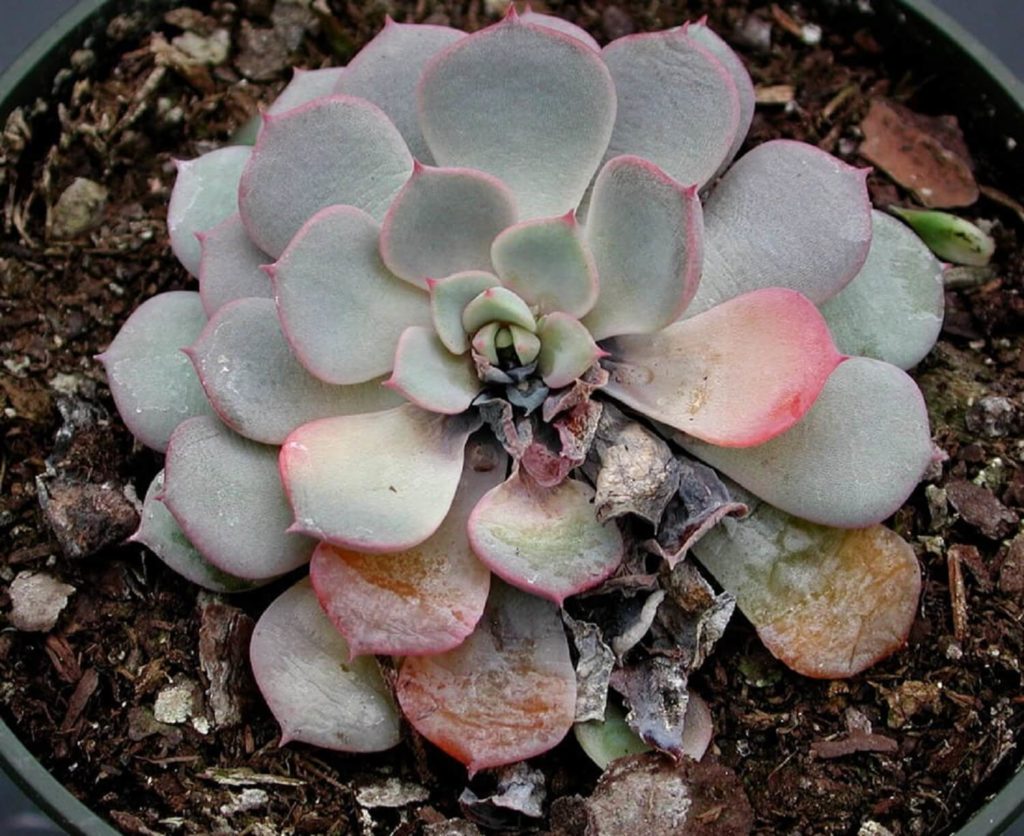
To avoid overwatering your succulents, always do the following:
- Always plant succulents in proper succulent soil
- If potting succulents in containers, always choose pots with great drainage
- Water succulents only when the soil is dry
- Monitor your succulent’s health by touch as well as by sight
- Understand the signs of succulent problems and act promptly if you see signs of succulent rot
As careful as we all are to provide good care, overwatered succulents still happen. Take the following steps to ensure you’re able to limit the damage and save your plants from succulent rot:
- Take the succulent out of the soil to check on the roots
- Remove excess soil, rinsing roots if necessary to check their condition
- Remove any rotting leaves and check the stem for signs of rot
- Discard used soil (If you find root rot) and cut back roots until all flesh is firm and healthy
- Remove and discard all signs of rot
- Replant rooted plants into fresh succulent soil and water lightly
- Prepare all healthy leaves and plant parts for propagation
Now you know exactly how to handle an overwatered succulent to save it and propagate it. So, don’t be shy — get that overwatered succulent out of its waterlogged soil and save it! You can do this!
Because life is just better with succulents!

P.S. – I’d love it if you’d subscribe to The Succulent Eclectic! I’ll send you my FREE e-course 7 Steps to Succulent Success!
P.P.S. Why not join my Facebook Group for succulent lovers? We talk about succulent care, propagation, succulent identification, and design. It’s a warm and welcoming group that would love to meet you!
